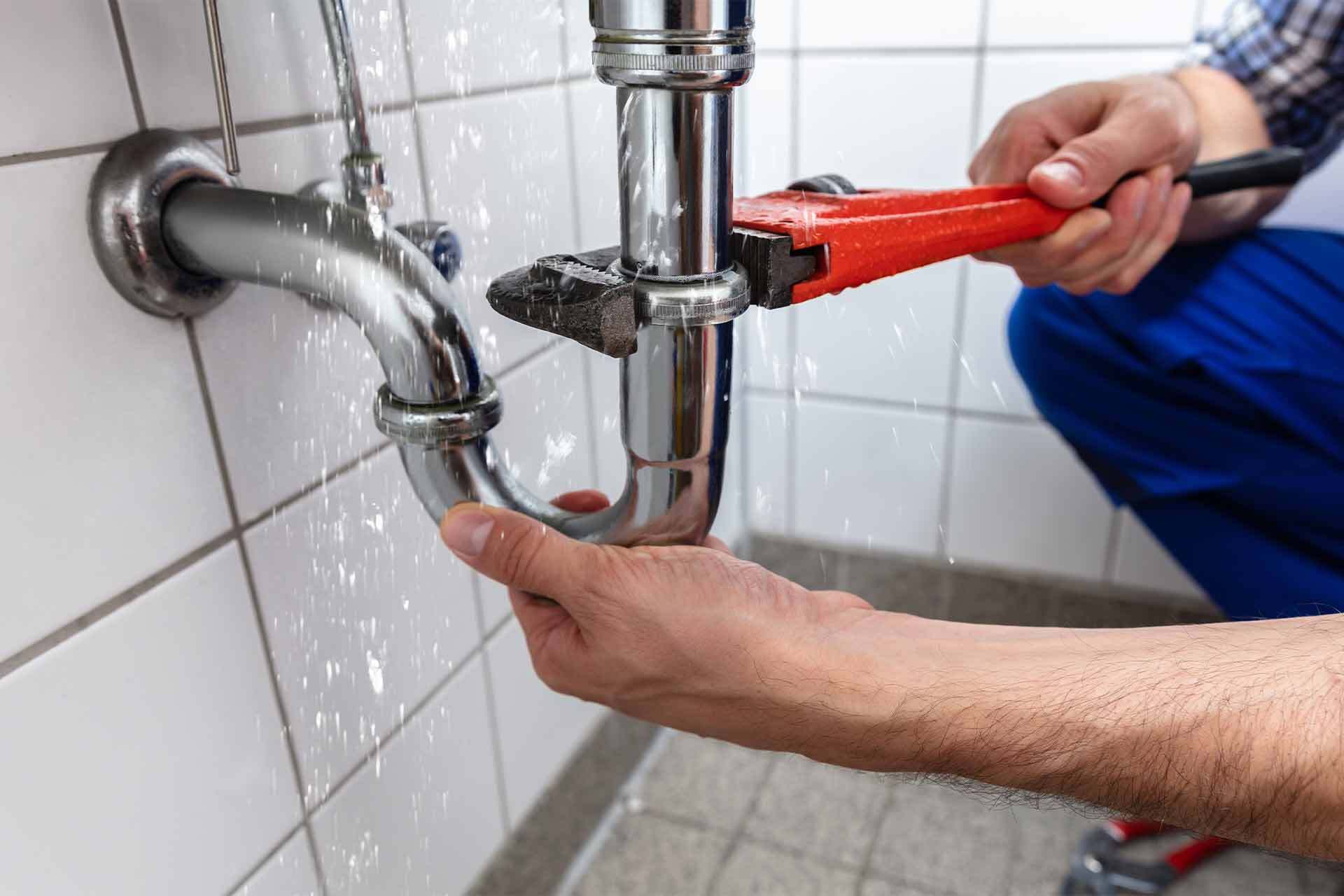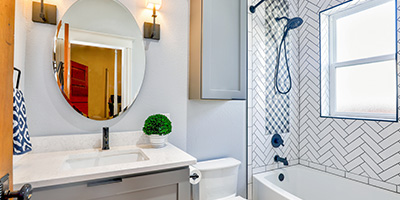Key Bathroom Plumbing Tips Every New Homeowner Should Know
Key Bathroom Plumbing Tips Every New Homeowner Should Know
Blog Article
The author is making a few good pointers related to General Plumbing Tips for New Homeowners in general in the article beneath.

For new home owners, understanding and maintaining washroom plumbing can save both time and money by preventing costly problems down the line. Right here are some important shower room plumbing pointers to help you keep whatever running efficiently.
Acquaint Yourself with the Main Shut-Off Valve
Understanding where the major water shut-off shutoff is located in your home is vital. This permits you to quickly shut off the supply of water in case of major leaks or during plumbing emergencies, avoiding substantial water damage.
On A Regular Basis Evaluate for Leakages
Little leakages can cause large issues. Consistently examine under sinks, around commodes, and near pipes components for any type of indications of leaks. Look for dampness, small drips, or rust. Catching and fixing leakages early can prevent much more serious damage and conserve water.
Do Not Neglect Slow Drains Pipes
If your sink or tub is draining slowly, it's usually an indicator of a clog forming. Resolving this very early can stop a total obstruction. Use a plunger or a plumbing's snake to remove particles. Prevent using chemical drain cleansers as they can harm your pipes in time.
Know What Not to Flush
Toilets are not waste disposal unit. Stay clear of flushing anything besides toilet paper and human waste. Items like wipes, feminine health products, and cotton swabs need to be taken care of in the garbage to avoid blockages and sewer back-ups.
Set Up Strainers in Drains
Location filters in your sink and tub drains pipes to catch hair and other debris prior to they enter your pipes system. Cleaning the strainers on a regular basis will aid prevent buildup and maintain water moving freely.
Keep Your Water Heater
Guarantee your hot water heater is readied to an ideal temperature (normally around 120 levels Fahrenheit) to stop scalding and minimize energy usage. Flush the storage tank annually to eliminate debris buildup, which can lower the efficiency and life expectancy of your heating system.
Upgrade Your Fixtures
If your home has older components, consider upgrading to extra efficient designs. Modern commodes, showerheads, and faucets are created to make use of less water while supplying excellent pressure, which can considerably minimize your water costs and environmental footprint.
Beware with DIY Pipes Repair Works
While it's tempting to take care of all home fixings on your own, beware with plumbing. Some concerns could require specialist competence, especially if they include main water lines or drain fixings. Hiring an expert can occasionally be more economical than do it yourself, especially if it avoids more damage.
Get Ready For Winter
Protect your pipes from cold throughout cold weather by protecting pipelines in unheated locations like basements, attics, and garages. Throughout extreme cool, let cold water drip from taps served by subjected pipelines to help protect against cold.
Set Up Regular Maintenance
Consider scheduling annual assessments with an accredited plumbing professional. They can spot problems that you could miss out on, such as covert leakages or deterioration on pipes and fixtures. Normal upkeep helps expand the life of your plumbing system and can avoid emergency situations.
Verdict
Understanding and keeping your home's bathroom plumbing can prevent several usual problems. By complying with these necessary pointers, you can guarantee your bathroom remains functional and effective, saving you time and money over time.
8 Valuable Plumbing Tips for New Homeowners
Start With a Plumbing Inspection
It’s a good idea to call professionals to do the plumbing inspection. An inspection before moving in will help you realize any underlying plumbing problems so they don’t cause any inconveniences.
Inspections will help you realize any problems early enough and fix them before they cost you much more later. It’s even better if you do it before moving in.
Call professional inspectors who use high-tech equipment and cameras to survey the sewer systems and find hidden water pipes. They then check the conditions of the pipes and recommend solutions in case of problems. Even after moving in, carry out regular inspections to ensure everything is working optimally.
Understand the Signs of a Water Leak
Water leaks will damage your home if you don’t realize them early. If you’ve never owned a home before, you may have no idea about water leaks. Signs of leaking water include dripping sounds, signs of running water on the walls, or soft wallboards.
Inspect your cabinets to check for any signs of moisture and leaks. Also, record your monthly water bills. If you’re receiving high bills than normal, maybe the pipes are leaking water.
Clean the Drains to Prevent Clogging
Many things can block your drains. Soap, debris, oil, and hair are those dangerous things you don’t want to allow down the drains. If you don’t take care of them as soon as you move in, they’ll clog your drains and cause problems.
But sometimes you enter the house and notice that the drains are already clogged? You need to start the unclogging work by pushing down the debris using a plunger. Homemade solutions such as a combination of dish liquid and vinegar can also do the job.
Regularly clean your drains and prevent any dirt from piling up. No one wants to deal with clogged drains, and prevention is always better than cure.
Locate Your Water Valve
You need to know where to close if there’s a water leak or a burst pipe in your home. The main valve is located in a green utility box outside the house. In some houses, the valve is mounted underground.
Some valves are located inside the house in case there’s a utility room or in the basement. You’ll find the shutoff valves behind the plumbing fixture in the areas they serve. This can be behind the toilet, in the laundry area near the washing machine, or behind the toilet.
Put Weather Proofing the Pipes Among the Plumbing Tips
Weather can be the biggest enemy of your pipes. The colder seasons are the most dangerous because they can freeze the pipes. Frozen pipes can burst at any time, causing serious flooding and water damage in your home.
Avoid frozen pipes by clearing the lines and turning off the valves before the winter season. Insulate the exposed pipes using heating tape, fiberglass, or foam rubber sleeves. Open the cabinet doors to allow warm air circulation and put the faucets in a slow drip.
Learn Some Maintenance Tips for Your Faucet and Toilet
The toilet’s flapper and faucet cartridge will get old with time, and you’ll need to replace them. You don’t need to call a professional to repair your faucet and toilet whenever they have problems. Buying the new ones only cost a few bucks and comes with clear instructions for DIY faucet installation.
Don’t be afraid to try changing the cartridge or the flapper when you experience a leakage problem. It only takes a matter of minutes to remove a few screws, and you’ll be ready to go. You don’t need to spend all that money to hire someone when help is in your hands.
Have Your Emergency Items Ready
You need to have your plumbing kit within your reach always. Whenever you experience an emergency such as a water leak, you should grab your tools and get ready to fix the problem. Some of the essential tools for the work include a plunger, paper rolls, duct tape, a screwdriver, and towel rags.
Don’t forget to have hex keys ready so you can adjust the small bolts and fix multiple plumbing issues right away. You should also know that you won’t be able to fix all the plumbing issues all by yourself as some are too complicated. Ensure you have a contact list of certified and licensed plumbers near you.
Make Use of Simple Home Items
Many plumbing problems have their solutions right at home, and you don’t have to spend a dime. Some of the resources you have at home, such as a dishwasher, a bucket of water, or the drain snakes, can do the work.
A full bucket of water down the toilet bowl can help fix a toilet bowl issue. Pouring the water at high speed down the toilet drain will unclog everything and unblock the toilet. A plunger and a drain snake are also helpful for unclogging drains, tubs, sinks, and toilets.
Learn the Right Plumbing Tips and Take Care of Your Home
It’s always good to try and save some bucks whenever possible. These simple plumbing tips will help new homeowners settle smoothly and avoid petty issues. Well, there are some plumbing issues you can’t fix yourself, and you need a reputable plumber to help.
If you decide to seek professional services, there will be no better place to go than Mr. Rooter Plumbing. Get in touch with us, and let’s give you a plumbing estimate in Austin. We’re always here to ensure you get the best plumbing services for your home.
https://www.mrrooter.com/austin/about-us/blog/2021/may/8-valuable-plumbing-tips-for-new-homeowners/

Request A Quote Report this page